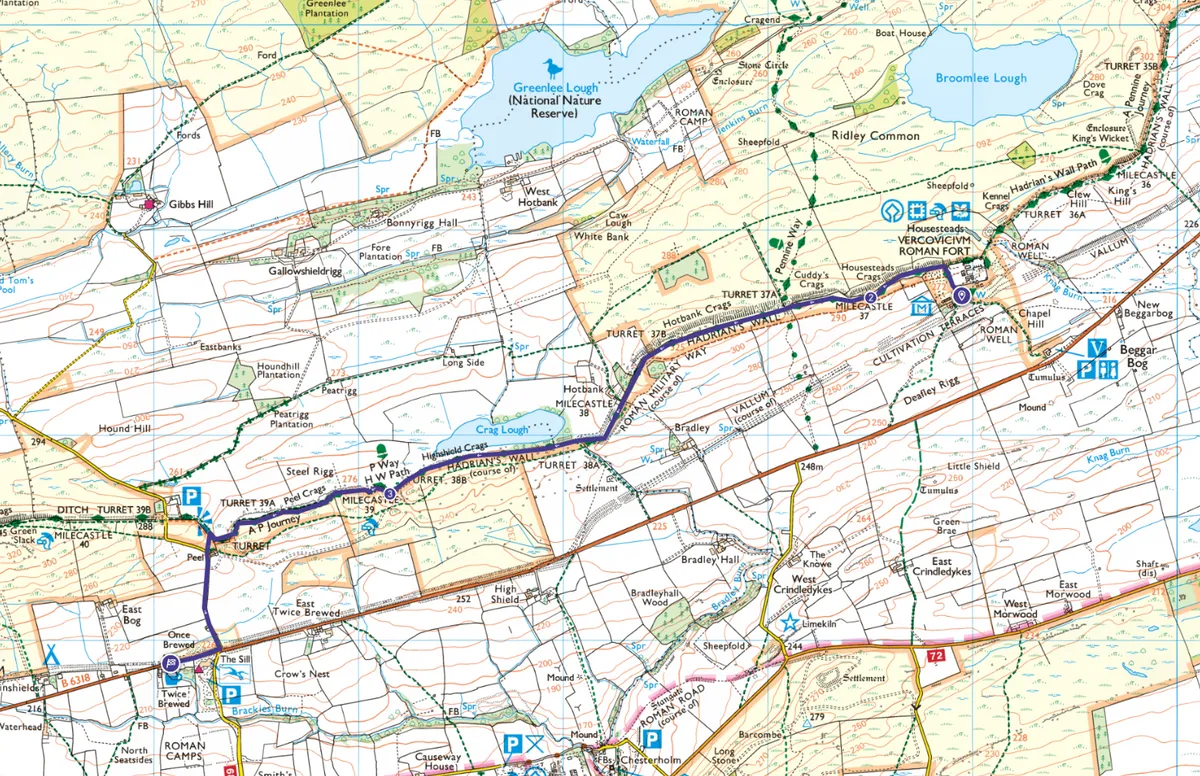Construction on the 73-mile Hadrian's Wall began in AD 122. It represented the northern limits of the Roman Empire, to the north of which lay wildlings – or rather, the northern Celtic Britons and Picts.
The structure is thought to have taken 15,000 men six years to build and, 2,000 years later, its straddles the landscape with an audacity that defined the Romans. The boldness of it! To build a ruddy massive wall right across a country seized by force.
In its day, the garrisoned, militarised boundary must have inspired fury and fear. Today it is a work of great beauty. The very desolation of this ruin is what makes it so marvellous, standing testament to the passage and power of time. And rolling out for miles in either direction are panoramic views across Northumberland.
One of the most scenic stretches of Hadrian's Wall runs from the ancient Roman fort of Housesteads down to the Twice Brewed Inn.
Looking for more walks in Northumberland? Check out our routes at Embleton Bay, Upper Coquetdale and Lindisfarne.
Looking for a shorter walk?
The Twice Brewed Inn pub is beautifully positioned just to the south of Hadrian’s Wall and is the ideal starting point for exploring one of its dreamiest sections on a 2.5-mile walk.
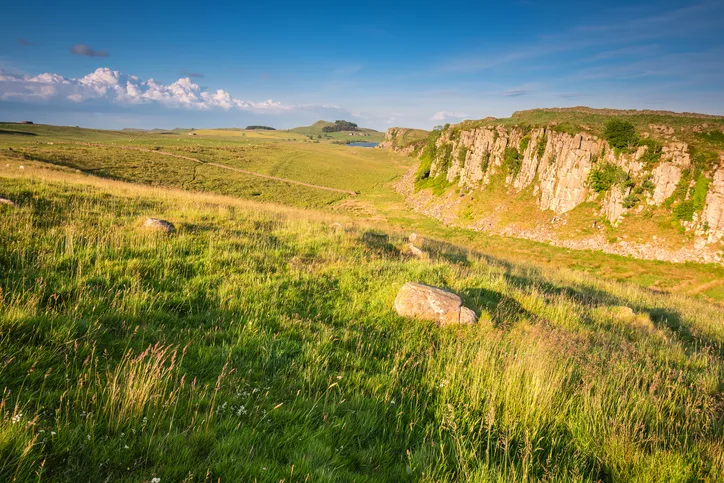
Housesteads to the Twice Brewed Inn walk
6.2 miles/10km km | 148m accent | 4 hours | moderate (return)
1. Housesteads Roman Fort
Start at Housesteads Roman Fort, a remarkably well-preserved ruin providing a glimpse into the operations of the Roman army from the 2nd to the end of the 4th century AD. Covering 2.2 hectares, the structure housed a barracks block, hospital, granaries and commander’s house, as well as 800 Roman soldiers, and a civilian settlement outside the military compound.
From here, join Hadrian’s Wall and head west through a magical avenue of trees, before emerging to a view of the ancient structure undulating over the crags.
A mop of thick grass on top of the wall gives it an amiable air – a far cry from the ominous border it must have once been.
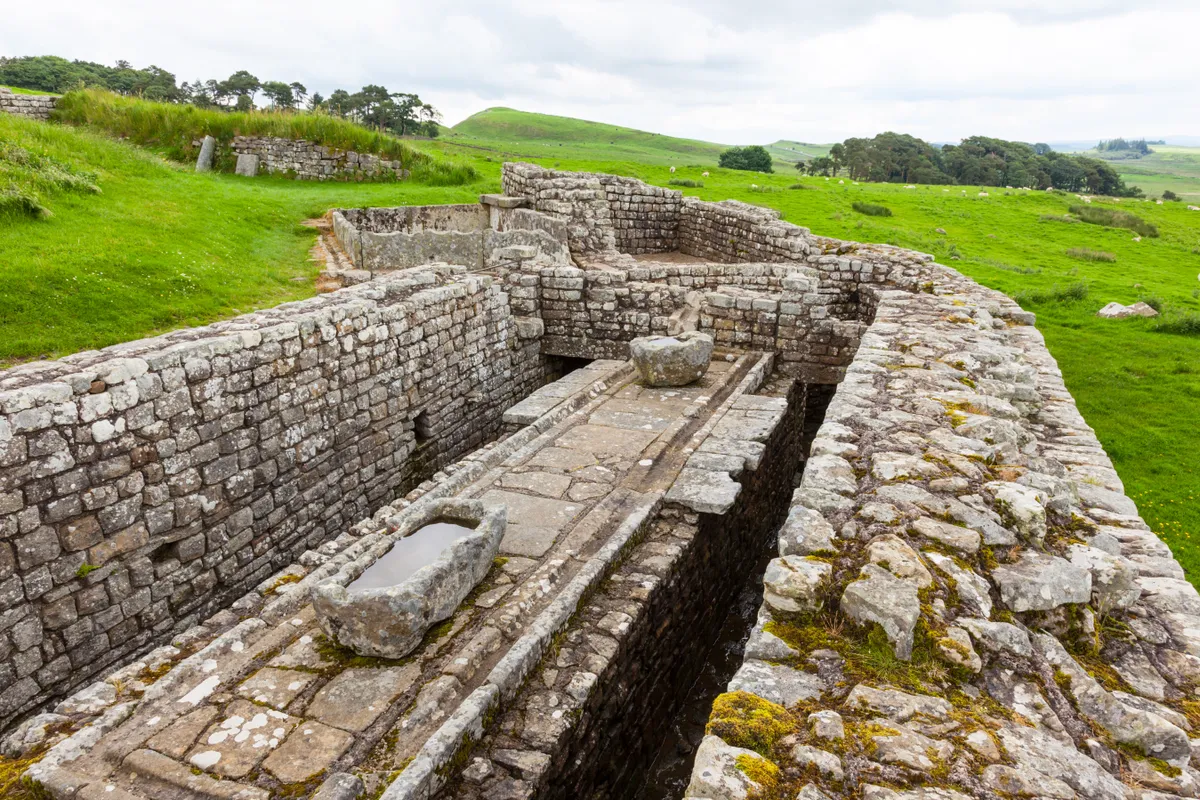
2. Crag Lough
Passing Milecastle 37, one of the small forts placed at every Roman mile along the frontier, wend your way along Cuddy’s Crags and Hotbank Crags.
As you march, savour every step. Hopefully the sun shines on the landscape – something about the way the light and shadows play across the crags, grassy tussocks and ancient wall creates a sight that is truly magical. Here Hadrian’s Wall travels over the Whin Sill, a vast igneous layer that dramatically protrudes in places, producing a mighty wall of volcanic rock.
Above the inland lake of Crag Lough, drink in the views and admire the sharp projection of the Whin Sill towering steeply over the earth below. Rather than build the wall with Whin Sill dolerite, the Romans quarried local sandstone that was easier to shape into regular blocks.
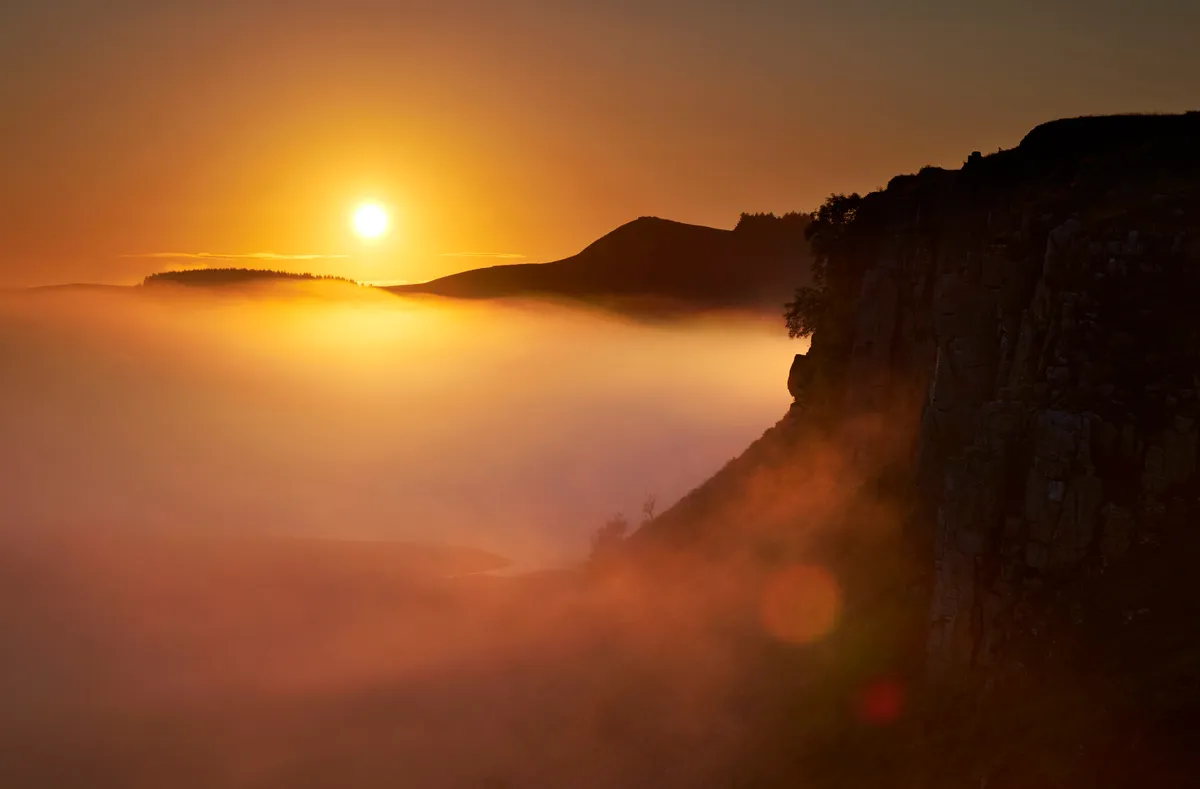
3. Sycamore Gap
The famous single sycamore tree, featured in Robin Hood: Prince of Thieves stands resplendent as you descend to Sycamore Gap. After passing Milecastle 39 and climbing Peel Crags, make your way down steep steps to the road and soon after the Twice Brewed Inn for a good feed. Well done, soldier.
If you have time, explore The Sill: National Landscape Discovery Centre, which offers free entry, before retracing your steps or following the B6318 back to Housesteads.
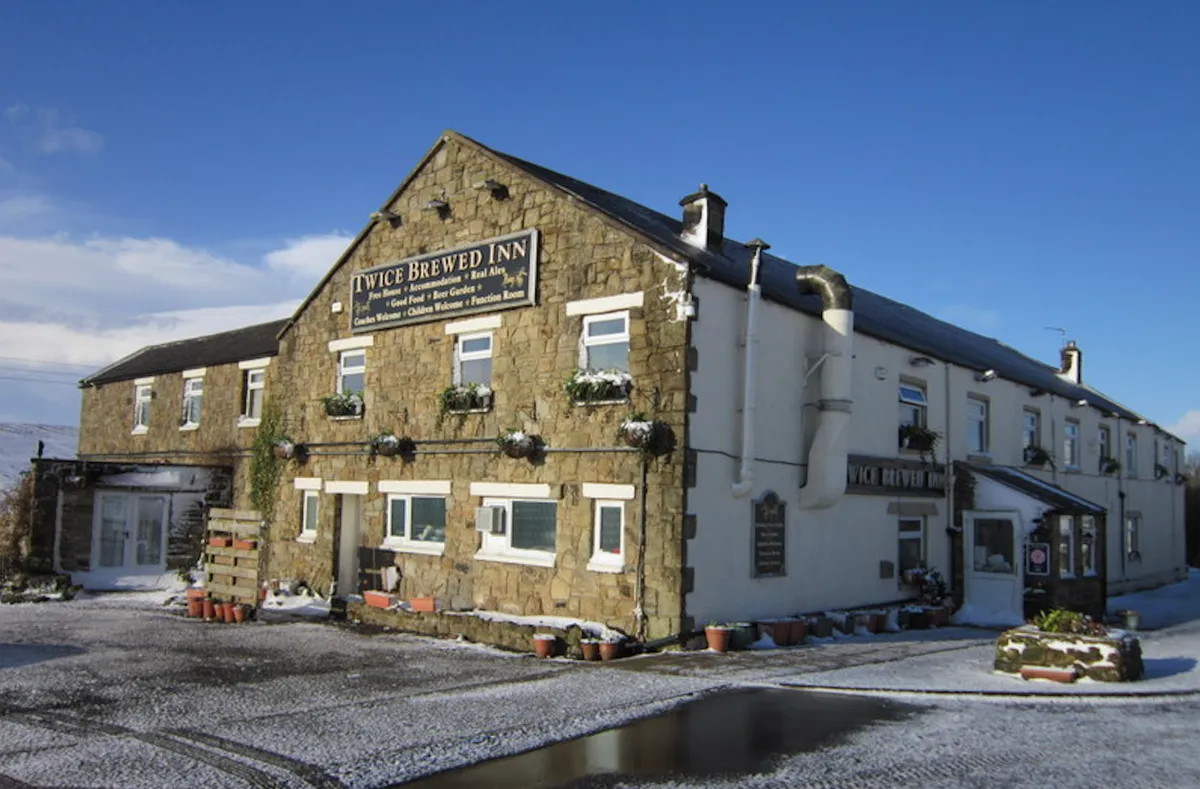
Housesteads to the Twice Brewed Inn map
Housesteads to the Twice Brewed Inn walking route and map
